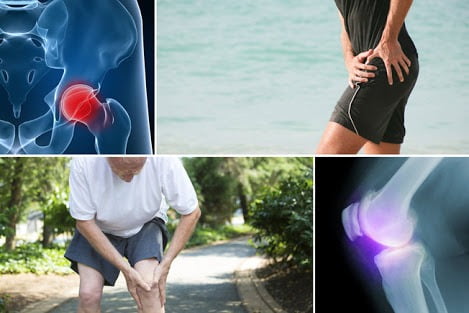Osteoarthritis (OA) is the most common form of arthritis, affecting millions of people worldwide. It is a degenerative joint disease, that features the breakdown and eventual loss of the cartilage (protein substance that serves as a “cushion” between the bones of the joints ) of one or more joints.
It develops gradually and has typical characteristics. OA may attack your joint long before you even notice any symptoms. By the time, the first sign or symptom of pain and stiffness show up, changes in the joint may have already reached an advanced stage. Symptoms vary from patient to patient, depending on which joints are affected and their severity.
Don’t ignore these Alarming Signs and Symptoms of OA as these can hinder work, social and family life if serious steps are not taken to manage them. By recognising them at an early phase, you can be treated and decrease the risk of disability.
So watch out for :
PAIN
Pain is the most common and distressing symptom of Osteoarthritis (OA), affecting a patient’s quality of life and ability to carry out activities of daily living (ADLs). People mostly seek medical attention for OA treatment, because of pain. Joint pain is insidious in onset, typically worse during periods of activity, mostly by movement and by weight bearing on the affected joint. Although the pain initially is intermittent, as OA gets worse, it may become constant and you may experience pain even while resting. It might wake you up at night.
OA pain is caused by the loss of cartilage that protects the ends of bones on both sides of the joint. A variety of treatments like physiotherapy and pain relieving medications are available that can help reduce pain.
However, if your skin turns red or if your joint pain is accompanied by other symptoms like fever then OA may not be the culprit. It might instead be rheumatoid arthritis which is an immune disease.

STIFFNESS
The feeling of stiffness in the joints is quite common among people with OA. It bothers more when you get out of bed in the morning or after a prolonged period of inactivity like sleeping or sitting. But the good news is that “the amount of muscle stiffness with OA doesn’t last more than 10-15 minutes as a rule”, said Nathan Wei, MD, clinical director of the Arthritis and Osteoporosis Centre of Maryland. According to him, the more you move around, the more quickly you’ll loosen up.
Your doctor may suggest low-impact exercises like cycling or swimming. Beware of doing vigorous activities like running and jumping as that may worsen your symptoms.
ALSO READ: Fight Sweets Addiction
REDUCED RANGE OF MOTION (ROM)
Because of joint pain and stiffness, people with OA tend to act less actively and their movements at an affected joint become limited. The joint gets so deteriorated that it can’t be fully contracted or extended, leaving you unable to fully extend your arms or legs. All this leads to reduced ROM and decreased flexibility. This can occur in any of the joints where OA is likely to strike.
Your Physiotherapist can restore the same ROM and may recommend effective ROM exercise to improve the functions of your affected joint.

MUSCLE WEAKNESS
People avoid using their joints because of the fear of extreme pain, which makes muscles weak and tender. All this leads to a vicious cycle as muscle weakness causes the joint to have to bear up under body weight and gets more damaged and painful. So, we can say that muscle weakness can be a contributing factor in the development of OA.
Because of the relationship between muscle weakness and arthritis, proper strengthening exercise should be an important part of your arthritis treatment plan. A regular workout routine should be incorporated which includes aerobic activities, balance moves and agility training. All this will keep muscles strong which can further protect your joints.
ALSO READ: Stubborn Belly Fat- Causes & Reasons
DEFORMED JOINTS
In the advanced stages of OA, the joint becomes deformed. The joint contains smooth cartilage which is protected by the joint capsule and synovial membrane. OA causes wear and tear of this cartilage and as it gets worn away, spurs may grow out of the bone edges. This leads to joint deformity as the OA progresses which is quite often seen in the joints of fingers and toes. These bony protuberances can be felt under the skin and typically enlarge over time.
In severe cases, surgery or joint replacement is recommended.

JOINT CRACKING AND CREAKING
Due to wear and tear of cartilage, bones in the joint move against each other, producing a sound called crepitus which is quite audible. This cracking and creaking sound occurs because of the roughening of the normally smooth surfaces inside the joint. This is most commonly seen in patients with Knee OA.
If you are experiencing any of the above symptoms, it’s better to consult your doctor to rule out the suspected diagnosis.
“TAKE CARE OF YOUR BODY,
IT’S THE ONLY PLACE YOU HAVE TO LIVE.”
